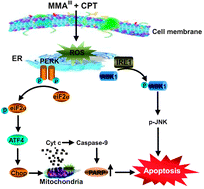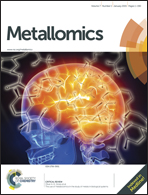The combination of arsenic and cryptotanshinone induces apoptosis through induction of endoplasmic reticulum stress-reactive oxygen species in breast cancer cells
Abstract
Arsenic trioxide has been successfully used for the treatment of patients with acute promyelocytic leukemia (APL) worldwide. Recently, it has also been further developed to treat solid tumors in clinical trials. However, the therapeutic effects on malignant tumors appeared to be unsatisfactory, as these cells exhibited resistance towards arsenic. In this study, we explored new therapeutic strategies for treatment of human breast cancer MCF-7 cells based on arsenic metabolites. The MCF-7 cells were exposed to three arsenic species, namely, inorganic arsenite (iAsIII) and its intermediate metabolites monomethylarsonous acid (MMAIII) and dimethylarsinous acid (DMAIII) either alone or in combination with cryptotanshinone (CPT) to establish their anticancer effects against MCF-7 cells. Surprisingly, MCF-7 cells were shown to be resistant to both iAsIII and CPT when used alone; however, they were shown to be relatively sensitive to treatment when exposed to MMAIII and DMAIII alone. Conversely, the combination of MMAIII with CPT showed significantly enhanced anticancer effects on MCF-7 cells at low doses, but no appreciable effect was observed upon exposure to the other two arsenic species with CPT. In addition, remarkable redistribution of pro-apoptosis related proteins Bax and Bak was observed in the mitochondria, together with activation of poly(ADP-ribose) polymerase (PARP) and caspase-9 after exposure to the combination of MMAIII with CPT. Furthermore, we clearly found that induction of apoptosis in MCF-7 cells was predominantly triggered by endoplasmic reticulum (ER) stress after exposure to the combination of MMAIII with CPT.


 Please wait while we load your content...
Please wait while we load your content...